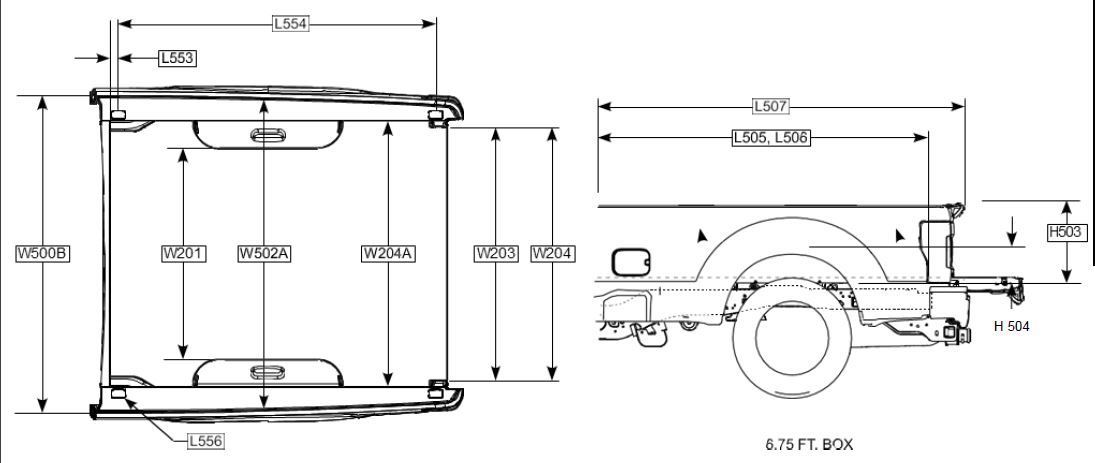Ford F250 6ft Truck bed
1,800 $ Original price was: 1,800 $.1,650 $Current price is: 1,650 $.




Here’s a visual breakdown of the Ford F250 6ft Truck bed and overall vehicle dimensions to help set the stage. Now, let’s dive deep into everything important about the F‑250 with a 6‑foot (well, actually 6.75‑foot) bed—covering its specs, design, practical uses, comparisons, and more.




Here’s a visual breakdown of the Ford F250 6ft Truck bed and overall vehicle dimensions to help set the stage. Now, let’s dive deep into everything important about the F‑250 with a 6‑foot (well, actually 6.75‑foot) bed—covering its specs, design, practical uses, comparisons, and more.
Understanding the Ford F250 6ft Truck bed: What It Really Means
Although commonly referred to as a “6‑foot bed,” the Ford F250 6ft Truck bed doesn’t actually offer a true 72‑inch bed. Instead, the short bed on the F‑250 is:
-
Flat floor length: 81.9 inches (6.75 feet)
-
Top edge length: 80.3 inches
-
Width at wheel wells: ~50.5 inches
-
Maximum width: ~66.9 inches
-
Depth: 21.1 inches
-
Cargo Volume: approx. 65.4 cubic feet
These dimensions have remained consistent across recent model years (2017–2024)
Compatibility with Cab Configurations
Cab Types & Bed Pairings (2025 F‑250):
| Cab Style | Bed Options |
|---|---|
| Regular Cab | Only 8‑ft bed |
| SuperCab (extended) | 6.75‑ or 8‑ft |
| Crew Cab | 6.75‑ or 8‑ft |
So, if you’re aiming for the 6.75‑ft bed, you’ll need either a SuperCab or Crew Cab
Payload & Towing Considerations
Payload Capacity (2025 models):
Payload varies by cab, engine, drivetrain, and trim. For Crew Cab with a 6.75‑ft bed:
-
King Ranch (7.3L, 4WD): up to 4,020 lb
-
Lariat (6.8L, 4WD): around 4,020 lb
Payload differences between 6.75‑ft vs 8‑ft beds generally range around 100 lbs in similar configurations
Towing Capacity:
While bed length doesn’t directly impact towing, the engine and cab setup do. For example, the 2024 Crew Cab with 6.75‑ft bed using the 7.3L “Godzilla” V8 paired with a 10‑speed automatic achieves:
-
Towing capacity: up to 16,600 lb
-
Payload: about 3,923 lb
-
Cargo volume: 65.4 cu ft (6.75‑ft bed)
Engine & Performance Highlights
-
The 7.3L “Godzilla” V8 delivers 430 hp and 485 lb‑ft torque, known for durability and comparatively affordable maintenance versus diesel powertrains.
-
It powers the F‑250 smoothly—yet lacks low-end torque characteristic of turbodiesels. Requires higher RPMs (~4000 rpm) for heavy hauling, which affects efficiency and comfort.
Why Choose the Ford F250 6ft Truck bed Option?
Pros:
-
Easier maneuverability than the 8‑ft version, especially in tight spaces and urban areas.
-
Perfect for balancing usability with compactness.
-
Compatible with many bed accessories (covers, liners, toolboxes) that are widely available in this popular size.
Trade-Offs:
-
Less cargo volume (~65 cu ft vs ~78 cu ft of the 8‑ft bed)
-
Slightly lower payload (~100 lbs less) in some trims
Accessory Fitment & Practical Use Cases
-
Tonneau covers, bed liners, racks, toolboxes typically match the Ford F250 6ft Truck bed measurements.
-
Built-in features like tailgate steps, rear corner steps, LED bed lights, and on‑board power (Pro Power Onboard) enhance usability and convenience .
Bed Dimensions Visual Context
-
The first image (top-left) gives a general look at the truck’s overall profile.
-
The second (top-right) and third (bottom-left) images offer dimensional schematics of the bed’s interior, including width between wheel wells.
-
The fourth (bottom-right) depicts specific dimensional changes and measurements, helpful when planning installations or modifications.
Final Thoughts & Recommendations
If you’re planning to purchase or use an F‑250 with a 6‑ft (i.e., 6.75‑ft) bed:
-
Know the reality: It’s 81.9 in at the floor, not 72 in—this impacts how you load materials or choose accessories.
-
Match to activity:
-
Want more compactness and ease? Ford F250 6ft Truck bed is smarter.
-
Need maximum cargo and payload? Consider going for the 8‑ft version (if your cab allows).
-
-
Choose the right trim & engine for payload needs; Power Stroke diesel trims offer increased towing but payload differences depend on configuration.
-
Leverage available features: onboard scales, power supply, tailgate assist, and lighting improve functionality dramatically.
Related products
Truck Beds
Truck Beds
Truck Beds
Truck Beds
Truck Beds
Truck Beds
Truck Beds
Truck Beds























